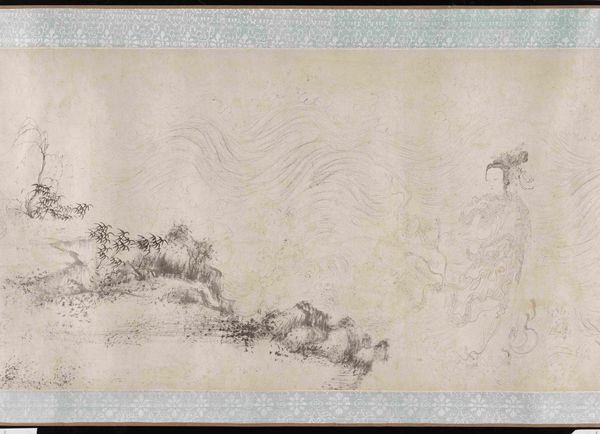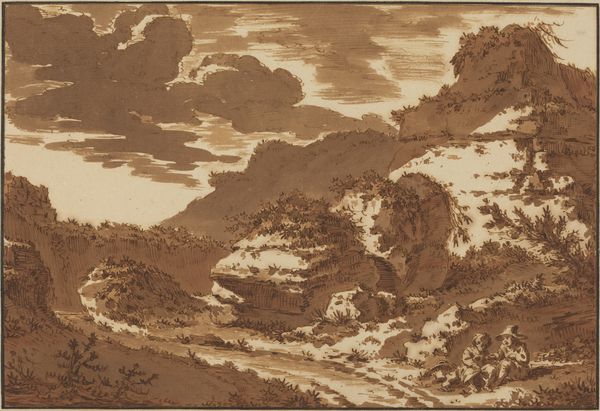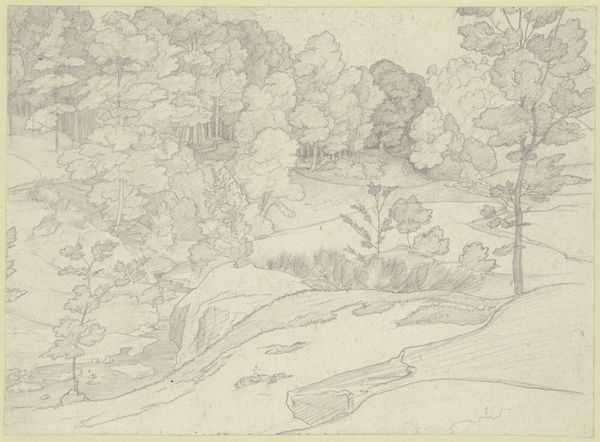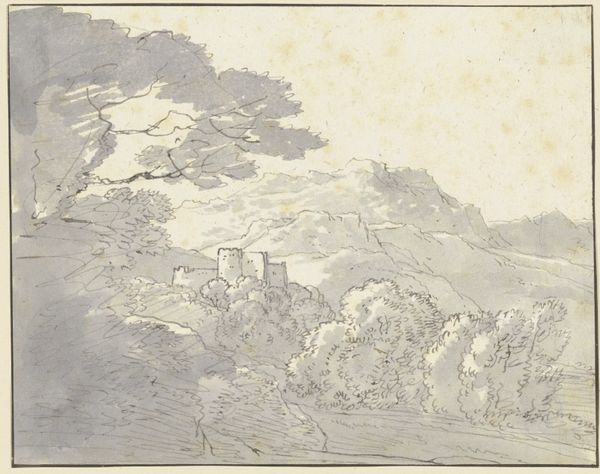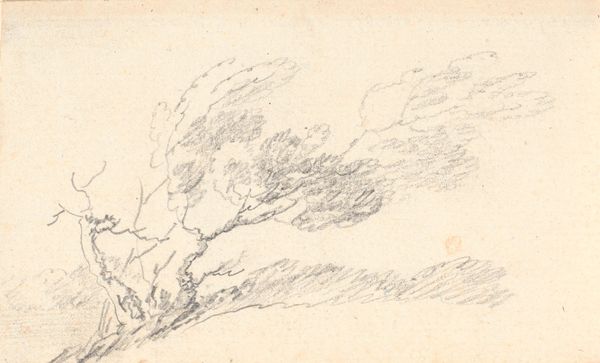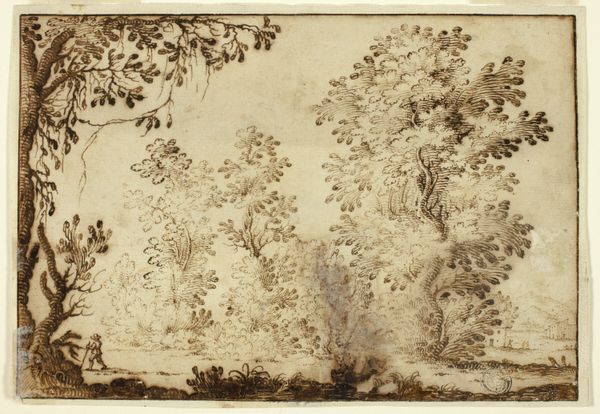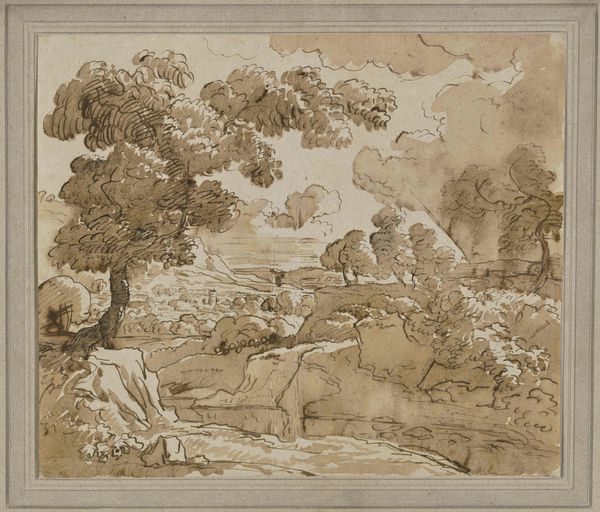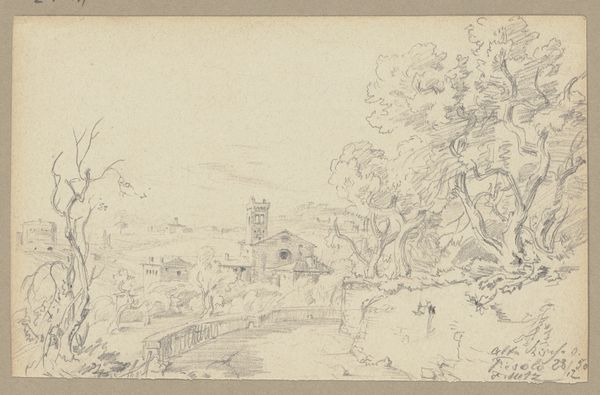
Banks of the River Dee near Eaton Hall, Cheshire c. 1759
0:00
0:00
Dimensions: 187 × 304 mm
Copyright: Public Domain
Editor: Richard Wilson’s “Banks of the River Dee near Eaton Hall, Cheshire,” made around 1759 using pencil, chalk, and paper. There’s something so tranquil about it. What do you see in this piece, beyond the picturesque landscape? Curator: The prevalence of the "picturesque" at this time can itself be seen as symbolic. Here, Wilson grapples with ideas of ownership, cultivation, and idealized nature through visual encoding. Do you notice anything about the light? Editor: The light… well, it’s quite soft, almost dreamlike, which does give it a sense of romanticism. And the figures in the foreground… they look like they are integrated with the nature around them, perhaps to suggest how people belong to a landscape, maybe? Curator: Precisely! And the hazy, almost ethereal rendering of Eaton Hall in the distance. That's no accident. The glowing, slightly indistinct presence of the Estate acts as a visual signifier of power, wealth, but also perhaps of an unobtainable ideal. Light becomes a symbol of status, if you will. How do you think someone viewing this then may have internalized its message? Editor: So, it's not just a pretty picture. It reflects the social hierarchy of the time, the idealized, unattainable life of wealth, all presented through carefully constructed imagery, where even the light has meaning. Wow! Curator: Exactly. Landscape art isn’t always just about pretty scenery. It’s so often about the cultural memory embedded within the land and what we choose to emphasize or omit in its portrayal. Editor: It’s amazing how much depth can be hidden within a seemingly simple drawing. It's given me a whole new perspective. Curator: It's shown me again the land is never truly empty; it's inscribed with stories and meanings waiting to be decoded.
Comments
No comments
Be the first to comment and join the conversation on the ultimate creative platform.


